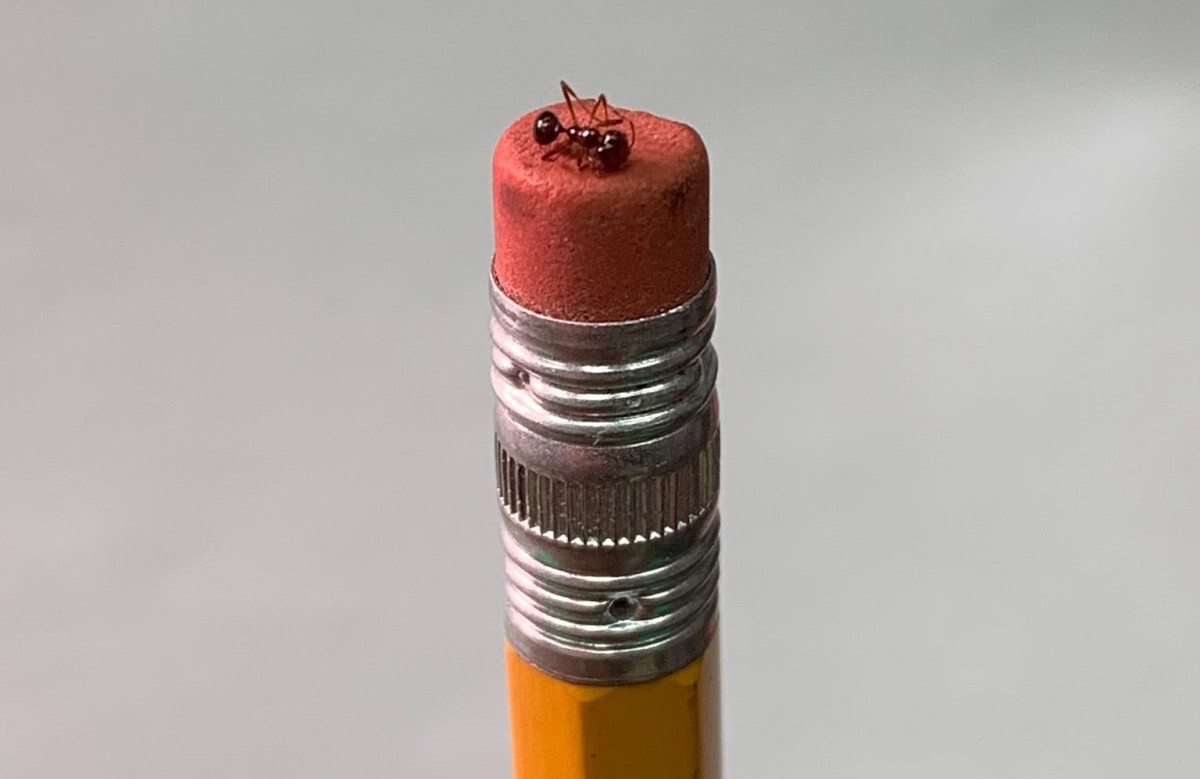Researchers at the University of Georgia have developed a new non-destructive method to monitor the heart rate of ants using common laboratory equipment. In a recent paper published in Entomologia Experimentalis et Applicata, they described the technique, which could serve as an important stepping stone for future research in ant physiology.
Assistant Research Scientist Andy Davis, recent graduate Kathleen Clancy (BS ’18), and Assistant Professor Takao Sasaki of the Odum School of Ecology began working on the low-cost and non-destructive technique that opens the door towards new research questions and discoveries.
Ants have a blood vessel running along the top of their back that acts as the heart and pumps hemolymph, a substance similar to blood in humans, throughout their body. This vessel is most visible in the ant’s abdominal area.
The method for observing this vessel involves illuminating the ant from below with an infrared light while viewing it under a basic light microscope. The researchers then digitally record the number of beats per minute.

According to Clancy, this method was developed through trial and error. They first created a small well in the slide for the ant to move around in, but found that even a small amount of movement was too much to obtain a proper measurement of the ant’s heart rate.
They then encountered issues with keeping the ant still enough on the slide to measure its heart rate.
“We were struggling with how to keep the live ants attached to the slide so that they weren’t moving around,” Clancy explained.
The researchers settled on clear adhesive tape that could be applied and removed without hurting the ant.
The method was tested on three different species of ant: fire ants (Solenopsis invicta), Argentine ants (Linepithema humile) and winter ants (Prenolepis imparis).
To test whether the new method could track rapid heart rate changes, they used a device to mechanically agitate the ants and then examined their heart rates. They found that they could successfully track the ant’s heightened heart rates caused by the agitation.
Davis has been using this new method to examine the heart rates of ants in urban versus rural areas to see if an environment with more stimuli or “stressors” can lead to higher heart rates in ants. He believes this is just one of many questions the method can be used to address.
“This project opens the door for exciting future work,” said Davis. “There’s a lot of interesting questions we can look at with this approach.”

